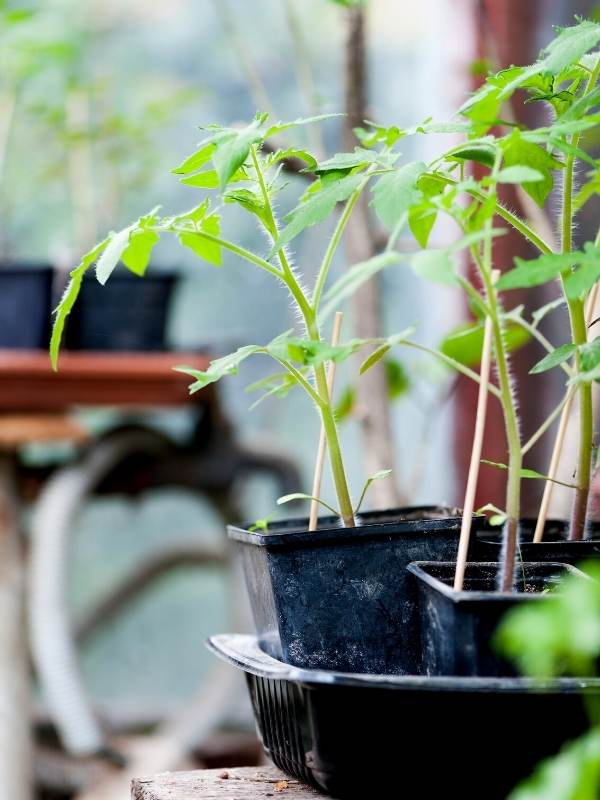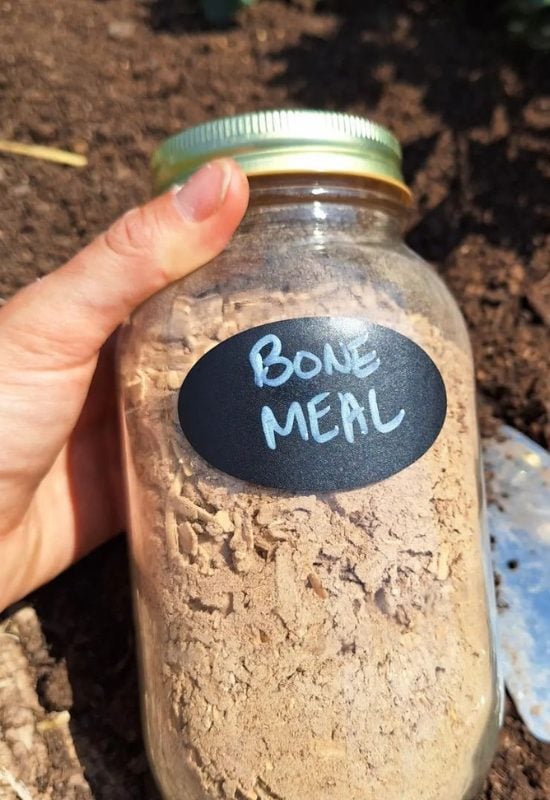
There’s nothing sweeter than eating tomatoes picked on the day from your own vegetable garden! Maybe they don’t look as good as those you get from the grocery store, but they taste a million times better! And they are healthy too if you don’t use chemicals… But then, how do you get a bountiful, long and nonstop harvest? There are some tricks to get your plants to give you lots of juicy fruits all through the season, to “manipulate” them, so they keep flowering and providing joy and food to your dinner table.
And no, you don’t need any pesticides, weed killers and other chemical stuff! I want to show how to get tomatoes for months on end with simple methods, without polluting them and your family with toxic substances. Let’s start!
1: Always Harden Your Tomato Seedlings

If you want a long and bountiful season with your tomatoes, you need to start before you plant them. Whether you buy the seedlings or grow them yourself, they are used to a comfortable environment and steady conditions, and moving them outdoors will give a shock. This will weaken them and delay them.
So, harden them first! And don’t worry about planting them a week later if you have just bought them; they will keep growing anyway. And the process is simple.
- Find a sheltered place (from wind, low temperatures and strong sunlight).
- Take your seedlings out for one or two hours on the first day, ideally in the afternoon (when conditions are more stable).
- The next day, increase to 3 to 4 hours, then 5 to 6 and so forth, until they are ready to spend the night outdoors (about a week to 10 days, depending on the climate).
- Only then, you can transplant them.
2: Prune Your Indeterminate Tomatoes

Indeterminate tomatoes keep giving you fruits all through the season, but only if you prune them… They will grow tall, and they will flower continuously, but you must direct their energy to a single stem.
This way, your tomatoes will produce more and up to 2 weeks earlier!
So, make sure you have one stem, tied to a stake. If it grows two or more, choose the strongest one and cut off the others.
And make sure that you remove all suckers. Suckers are side stems that grow in the armpits between the main and secondary stems, and they are easy to snap off with your fingers. You may think that they will give you more tomatoes, but they won’t! They may produce a few on occasion, but they will use up a lot of energy and nutrients, and that’s why they look strong and healthy.
Also, remove excessive foliage, because it will stop sunlight from reaching your tomatoes, especially in colder climates.
3: Choose Different Varieties of Tomatoes
If you plant a single variety of tomatoes, you run some risks, for example:
- If it is determinate, it will only fruit for a short time, very abundantly, but not throughout the season, like indeterminate varieties.
- Even if you plant indeterminate varieties, some start and finish earlier, others later.
- Most importantly, spreading diseases often attack specific varieties, and if you are unlucky, and you choose that one, you will end up with a big disappointment.
“But I only have a small backyard,” you may say. Then, do as I do: seed and seedling sharing with your neighbors and friends is the perfect solution; you buy many varieties as a group, and then divide them up!
4: Prune Your Determinate Tomatoes – But Much Less!

On the other hand, you want determinate tomatoes to grow wide, because all branches will produce fruits, including suckers. So, only remove the suckers below the first flowering branches.
Determinate tomatoes don’t grow as tall as indeterminate ones, and they will give you one big burst of fruits, then stop, so you want them to have as many stems to bear them as possible.
5: Grow More Indeterminate than Determinate Tomato Plants
If you fill your vegetable garden with determinate tomatoes, you will get one big, intense and fast harvest, or more (depending on how many varieties you plant, and when they ripen). But if you grow more indeterminate plants, you will get a long lasting and continuous harvest.
A mix of the two types will give you different types of tomatoes, also to make sauce and preserves (with determinate ones especially), but also provide a continuous harvest for your salads and to use fresh.
My tip for the average family? 25-30% determinate and 75-60% indeterminate.
6: Keep the Base of the Stem Clean!

You don’t want your tomatoes, determinate or indeterminate, to have foliage and side stems at the base. They will touch the soil and get diseased, and they will not get enough light to ripen the fruits well anyway, and if they do, they will likely rot, but they will still use up energy.
What is more, it will make your watering messy, with splashes that can leave drops on the main stem, and bring infections, like fungi…
So, keep the first foot (30 cm) at the base clean from leaves, stems and suckers.
This will give you healthier tomato plants that will produce into later in the season.
7: Disinfect Your Pruners or Blades Beforehand!
Pruning can also be a health risk for your tomatoes. The blades of your pruners can carry infections from one plant to another.
So, always disinfect them, with alcohol (but bleach or apple cider vinegar are fine) before you start pruning and every time you move from one plant to the next!
8: Mulch Your Tomatoes as Soon as You Transplant the Seedlings
Don’t wait; mulch your tomatoes as soon as you plant the seedlings. This will help them settle in the new soil, and it will keep it humid, warm and, as it decomposes, it will also feed your plants with extra nutrients.
You can use any type of mulch. Some gardeners like to use wood chips, but consider straw as well; it is cheap, and it reflects the sunlight back to your tomatoes, helping them ripen! Ideal in colder climates.
9: Have You Left Some Suckers on Indeterminate Tomatoes? Do This Then!

As we said, you may leave a few suckers on indeterminate tomatoes as well, especially in warm countries, to shade the fruits a bit. But then, follow them up the stem and, as soon as they produce some flowers, cut them just above the blooms with sterile pruners.
Otherwise, they will divert energy into growing, and the tomatoes will be small, and they may not even ripen.
10: Learn to Water Your Tomatoes Correctly

Tomatoes drink a lot! It depends on their size, on the weather, and also on where you grow them (they need more in raised beds), but on the whole, they are very thirsty plants, needing up to a gallon of water (4 liters) per plant every day in summer!
But when you water them, you can also damage them… So, let’s see how to do it correctly:
- Never water your tomatoes from above! They don’t want to have wet leaves, they can burn in the Sun, and they can get humid, which can cause infections, fungi, molds and attract pests.
- Water them from the base and slowly! Avoid any splashes on the stalk, they too can cause diseases.
Of course, water them in the evening, and the ideal way is to use a drip irrigation system; sprinklers are no good, because they wet the plant. So, the rule is, humid feet but dry bodies…
Good watering will also help you avoid blossom-end rot later on. What is it? It’s when tomato fruits become blackish and leathery at the bottom, it is very common. It is due to lack of calcium, true, but this nutrient also needs water to travel up. Talking of which…
11: Provide Calcium for Your Tomatoes Early on
So, we are talking about blossom-end rot, and the fact that tomatoes need quite a lot of calcium. So, give it to them before your plants produce the first flower buds. But how can you do it?

My advice is to give a scoop, or a handful of bonemeal to each seedling when you plant them, or, if you have not done it, as soon as possible. It is very rich in calcium (12-13%) and it is really excellent to avoid blossom-end rot in tomatoes.
Other calcium rich fertilizers will be fine, but…Egg shells… They take ages to decompose, unless you dissolve them in vinegar. Otherwise, they will feed your tomatoes next year…
Moving Forward with Your Tomato Plants
Now, these are all the tricks and secrets to get your tomatoes to reach the fruiting season healthy, and with the best possible conditions to give you a long and rich harvest. But what happens when you start seeing the first flowers and fruits appearing on your plants? For this, you will have to wait and read the second part, where we will talk about how to keep your tomatoes fruiting all through the season, and even extend their harvest time!

Written By
Amber Noyes
Amber Noyes was born and raised in a suburban California town, San Mateo. She holds a master’s degree in horticulture from the University of California as well as a BS in Biology from the University of San Francisco. With experience working on an organic farm, water conservation research, farmers’ markets, and plant nursery, she understands what makes plants thrive and how we can better understand the connection between microclimate and plant health. When she’s not on the land, Amber loves informing people of new ideas/things related to gardening, especially organic gardening, houseplants, and growing plants in a small space.



